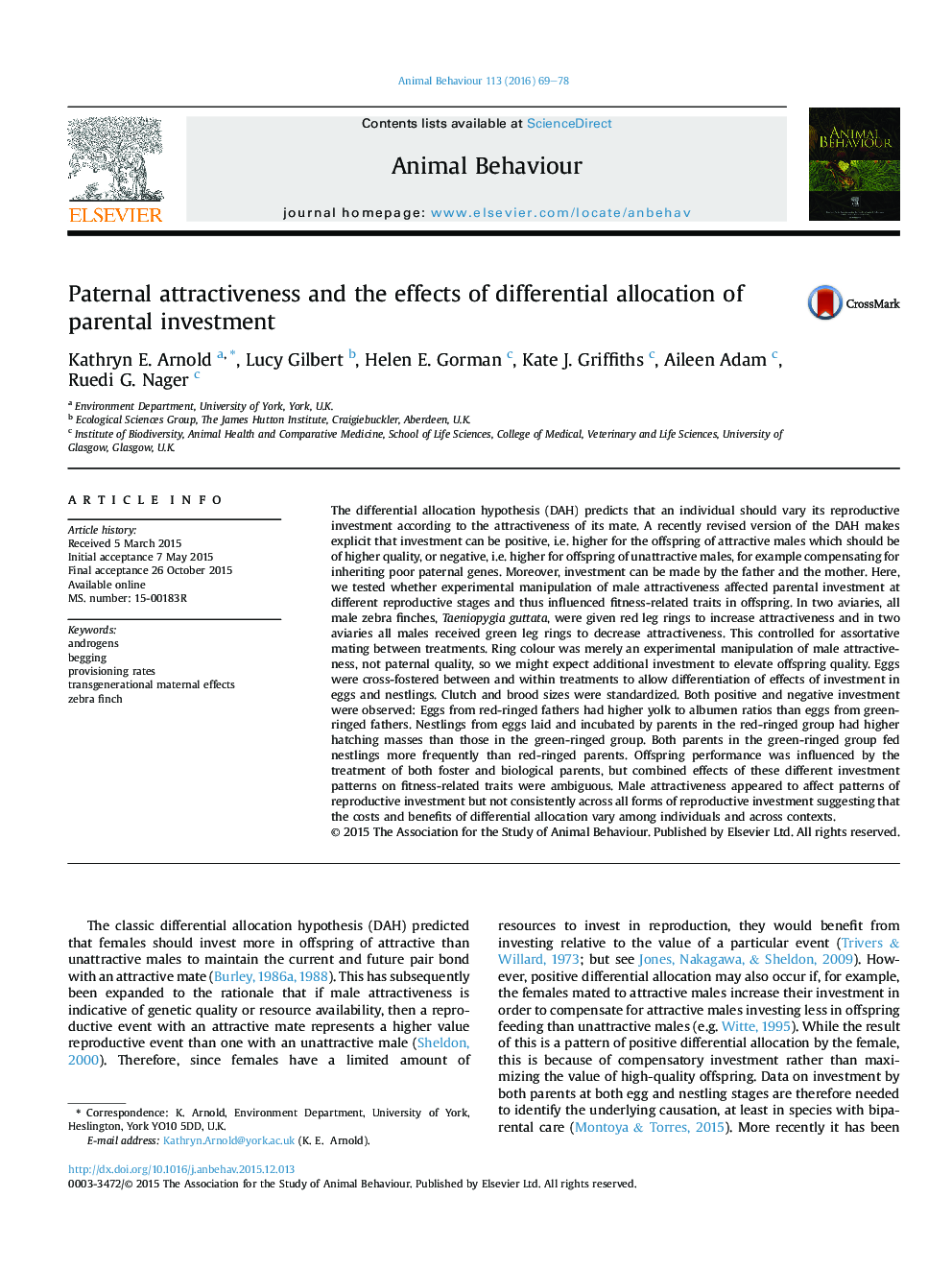| کد مقاله | کد نشریه | سال انتشار | مقاله انگلیسی | نسخه تمام متن |
|---|---|---|---|---|
| 8489244 | 1552215 | 2016 | 10 صفحه PDF | دانلود رایگان |
عنوان انگلیسی مقاله ISI
Paternal attractiveness and the effects of differential allocation of parental investment
ترجمه فارسی عنوان
جذابیت پدر و تأثیر تخصیص دیفرانسیل سرمایه گذاری والدین
دانلود مقاله + سفارش ترجمه
دانلود مقاله ISI انگلیسی
رایگان برای ایرانیان
کلمات کلیدی
آندروژن ها، التماس کردن، نرخ های تأمین مالی، اثرات مادری بین نسلی، خرچنگ گورخر،
موضوعات مرتبط
علوم زیستی و بیوفناوری
علوم کشاورزی و بیولوژیک
علوم دامی و جانورشناسی
چکیده انگلیسی
The differential allocation hypothesis (DAH) predicts that an individual should vary its reproductive investment according to the attractiveness of its mate. A recently revised version of the DAH makes explicit that investment can be positive, i.e. higher for the offspring of attractive males which should be of higher quality, or negative, i.e. higher for offspring of unattractive males, for example compensating for inheriting poor paternal genes. Moreover, investment can be made by the father and the mother. Here, we tested whether experimental manipulation of male attractiveness affected parental investment at different reproductive stages and thus influenced fitness-related traits in offspring. In two aviaries, all male zebra finches, Taeniopygia guttata, were given red leg rings to increase attractiveness and in two aviaries all males received green leg rings to decrease attractiveness. This controlled for assortative mating between treatments. Ring colour was merely an experimental manipulation of male attractiveness, not paternal quality, so we might expect additional investment to elevate offspring quality. Eggs were cross-fostered between and within treatments to allow differentiation of effects of investment in eggs and nestlings. Clutch and brood sizes were standardized. Both positive and negative investment were observed: Eggs from red-ringed fathers had higher yolk to albumen ratios than eggs from green-ringed fathers. Nestlings from eggs laid and incubated by parents in the red-ringed group had higher hatching masses than those in the green-ringed group. Both parents in the green-ringed group fed nestlings more frequently than red-ringed parents. Offspring performance was influenced by the treatment of both foster and biological parents, but combined effects of these different investment patterns on fitness-related traits were ambiguous. Male attractiveness appeared to affect patterns of reproductive investment but not consistently across all forms of reproductive investment suggesting that the costs and benefits of differential allocation vary among individuals and across contexts.
ناشر
Database: Elsevier - ScienceDirect (ساینس دایرکت)
Journal: Animal Behaviour - Volume 113, March 2016, Pages 69-78
Journal: Animal Behaviour - Volume 113, March 2016, Pages 69-78
نویسندگان
Kathryn E. Arnold, Lucy Gilbert, Helen E. Gorman, Kate J. Griffiths, Aileen Adam, Ruedi G. Nager,
